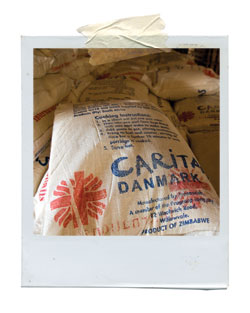
are now living in extreme poverty


Cut by half the number of people living on less than a dollar a day by 2015 and halve the number of hungry. Achieve full and productive employment and decent work for everyone, including women and young people.
In our world 1.4 billion people live in what's called extreme poverty – they survive on less than $1.25 a day. By 2015 though, it’s estimated that this will be reduced to around 920 million people – meeting the Millennium Development Goal in several areas of the world.
These extremely poor people now account for a quarter of the global population. In 1990, they made up half the world, so there has been significant progress. Much of this is due to the economic rise of China. But in Africa, there were 100 million more extremely poor people in 2005 than in 1999.
Right now over 1 billion people are suffering from hunger and malnutrition because they are so poor. The right to food has been denied them, and malnutrition is associated with the majority of deaths in developing countries.
The global economic crisis has struck a major blow to ending poverty and hunger. An estimated 55 million more people are now living in extreme poverty. The steep rise in food prices has pushed back progress on child nutrition - 1 in 4 children in the poor regions of the world remain underweight. Before the crisis, the Millennium Development Goal was within reach.
Millions of people have lost their jobs or have been pushed into vulnerable employment with no safety nets, often as unpaid workers in family businesses. The majority are African and South Asian, and are women. They remain the bulk of the working poor.

Being old or young and without a family to support you is the worst position to be in Zimbabwe these days. The vast majority of people in the country know hunger – a Caritas survey found that 9 out of 10 Zimbabweans didn’t have enough to eat. But when you’re alone, it’s even harder to cope. Hunger can become overwhelming.
At just seven years old, Beauty Moyo was abandoned by her mother in the western town of Plumtree when, like millions of other desperate Zimbabweans, she left the country. Beauty took refuge with her grandmother until she was 12, but her death left her alone again. Now 19, she is no longer by herself - she has two small sons to bring up - but she is doing this alone too. "I used to do work as a hairdresser when I could find it,” says Beauty, "But I have no one to look after the children now. If we had not had food from Caritas Zimbabwe, I don't know how I would have managed."
Caritas members in Zimbabwe run emergency feeding projects which benefit 1 million people directly and working with other relief agencies feed 3 million indirectly. Apart from identifying vulnerable individuals like Beauty Moyo, the projects feed schoolchildren and teachers, hospital staff and patients.
Help is also given to the elderly, many of whom, like Beauty, have been abandoned by their families who have left Zimbabwe to search for work in other countries.
Miriam Makamure lives in the Mucheke Old Person's Home in Masvingo. The home is run entirely on donations, there is no state support. So 88-year old Miriam and her 29 fellow residents are very happy with the three meals a day they receive from Caritas Zimbabwe . "We have milk in our tea here and we never go to bed without eating," she says, "We are all now energetic. The food is enough for us to do some work, given our health and our age."
Jameson Jack and Maria Mukwakwa met and married at the home. They think they are in their eighties. They both have families from their earlier lives but have lost contact with their children. Without Caritas's nutritious meals of beans, sadza porridge and donated meat and vegetables, it's hard to know where they would turn for help.
Photos: (top) A Rwandan market. Gary Moore/Trócaire, (below) Food distribution to schools in southern Zimbabwe. David Snyder/Caritas
Urge our governments to live up to their promises and increase the amount of development aid they give to poor countries to the 0.7 percent of GDP which they pledged.
Highlight the scandal of the extreme poor and their sheer numbers.
Legislate - and persuade other countries to do the same - for fair pay and social safety nets.
Invest in science, technology and training to allow more food to be grown for the world's hungry. Ensure that as much of this is done locally as possible.
Raise a warning flag on our changing climate and the additional challenges it will pose for the poor and hungry.